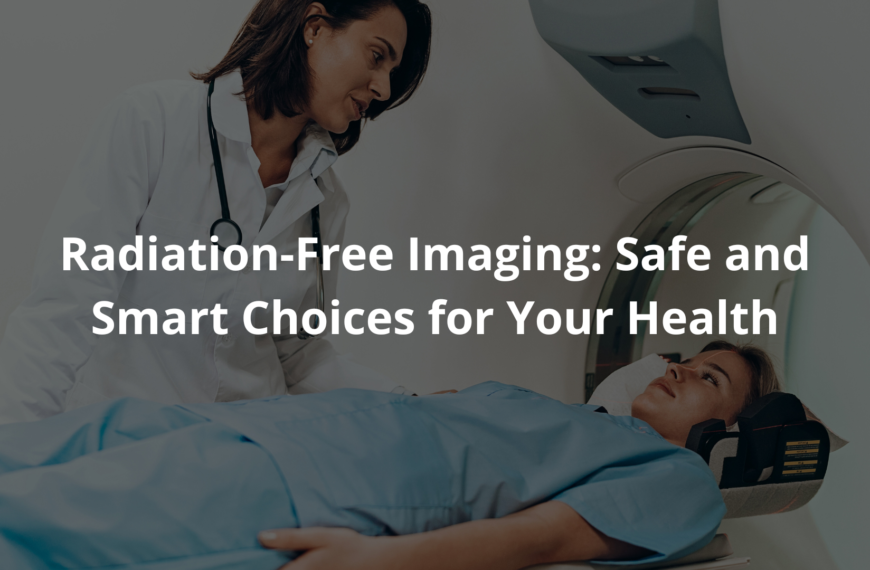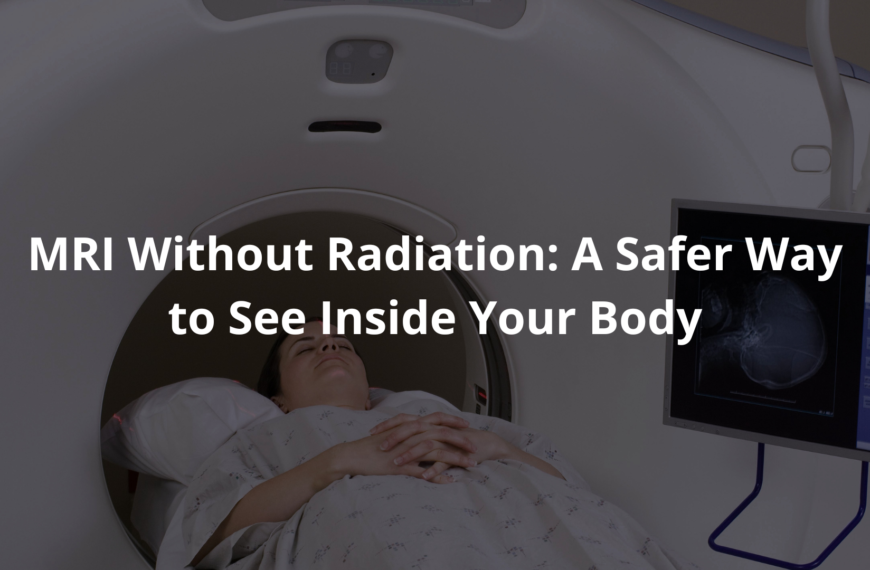Explore how emerging non-radiative technologies are changing medical imaging in Australia, improving patient care and safety.
Australian medical imaging is evolving, favouring non-radiative technologies. These innovations offer safer and faster diagnostic options, with the potential to improve healthcare accessibility. Techniques such as advanced ultrasound and faster MRI scans are gaining traction, enabling doctors to visualise internal structures without radiation exposure.
Early detection of subtle changes might also become more achievable (think millimetre-sized anomalies). These advancements hold promise for enhanced diagnostic accuracy and reduced patient risk. Interested in learning about the specific technologies shaping the future of Australian healthcare? Further reading awaits.
Key Takeaway
- New technologies help reduce radiation exposure.
- Better imaging means better patient care.
- Accessibility improves for people in rural areas.
Point-of-Care MRI
The idea of a mobile MRI, like the Swoop, is pretty amazing, isn’t it? Almost science fiction, really. A machine that comes to you – Alfred Health in Melbourne is already using it. Instead of lugging sick patients down long corridors. This portable MRI brings imaging directly to the bedside, particularly helpful in ICUs. Think of the benefits. No need to move critically ill patients, reducing risk.
It is important to remember:
- It uses no ionising radiation (a big plus for safety, the techs will be happy with this as well).
- This is huge for patient comfort and care.
- Especially in rural areas, far from big hospitals
Swoop offers a lower magnetic field strength (0.064 Tesla, apparently) that doesn’t provide the resolution of a traditional MRI (think 1.5 to 3 Tesla), but it offers something more important: speed and access. This technology might mean quicker diagnoses and treatment for patients in hard-to-reach places. For enthusiasts, it’s also a symbol of where medicine is headed: smaller, safer, and more accessible. A great step to better bedside care.
AI-Enhanced Imaging
AI in medical imaging, it’s like giving doctors super-powered glasses, isn’t it? No more endless staring at scans, hoping to catch that tiny detail. AI tools are helping doctors see images more clearly, and, apparently, faster. It’s reducing the number of repeat scans, which is great because, let’s face it, nobody wants extra radiation exposure.
In Australia, AI is changing diagnostics. Consider an X-ray:
- AI can spot things the human eye might miss, even with years of experience.
- More informed treatment choices are possible.
- Better outcomes for patients are more likely.
The goal is better patient care. AI is a helper, a tool, but it’s not replacing doctors, not yet at least. It’s about improving their ability to do their jobs effectively. Don’t be afraid of AI-enhanced images; it’s just another way to ensure the medical team sees everything they need to see. [1]
Hybrid Imaging Systems

Hybrid imaging systems, think of them as the Swiss Army knives of medical imaging. MRI and ultrasound combined into one machine. Imagine these systems help doctors see multiple things at once and its a great way to make better decisions during surgeries.
At places like Sydney Imaging’s Hybrid Theatre:
- Robotics helps with complicated procedures (less risk is always a win).
- Patients might experience less pain.
- Faster recovery times are often reported.
It’s important to remember, these hybrid systems aren’t just about fancy technology; they’re about better outcomes for patients. Using various imaging methods together can help doctors get a more thorough picture of what’s going on. These advances will allow us to move to less invasive, targeted therapies with less radiation. [2]
Total Body PET Scanners
Total Body PET scanners, these things are impressive, aren’t they? Fast, whole-body images. The National Total Body PET Facility in Australia, it’s like they’re at the forefront of this tech, or so it seems. These scanners help people get the care they need without too much radiation. This is essential when we’re talking about patients.
Consider the advantages for children:
- Less radiation exposure (always a good thing).
- Important for studying disease progression.
- Helpful for figuring out if treatments are working.
These scanners are essentially a detective for health, a way to see what’s happening throughout the whole body. Doctors can learn more about how the disease is spreading, and they can quickly evaluate treatments, resulting in better outcomes and better care for everyone.
RANZCR’s Role in Emerging Technologies
RANZCR, The Royal Australian and New Zealand College of Radiologists, not exactly a catchy name, but they’re important. Someone has to make sure these new imaging toys are used properly, and RANZCR seems to be it. They’ve even got ethical standards for using AI, which is good.
Here’s what RANZCR seems to be doing:
- Creating ethical standards for AI.
- Offering training programs for radiologists.
- Ensuring doctors know how to use new tech.
It’s all about patient safety at the end of the day. This organisation understands that tech is useless if the people using it aren’t trained. Well-trained doctors mean better patient care, no question, no doubt. This oversight provides the peace of mind you need when getting treatment.
Impact on Patient Care
Credits: Deakin University
All these new imaging technologies, they add up to something. Faster diagnoses, maybe less invasive procedures. These things matter to people. Australia’s healthcare system is trying to improve.
Here’s how emerging technologies might be helping patients:
- Less radiation (good for everyone).
- Better access to imaging for remote areas (essential in Australia).
- More accurate diagnoses, due to AI assistance.
- Faster, easier scanning processes.
It’s not just about bells and whistles; it’s about tangible improvements in patient care, in my humble opinion. Maybe a bit less waiting time, perhaps a more accurate diagnosis sooner. Maybe all these things result in happier, healthier people, or at least that’s what people hoping.
FAQ
What are non-radiative technologies and how do they differ from traditional imaging methods?
Non-radiative technologies like Ultrasound, Optical imaging, and Magnetic Resonance Imaging (MRI) don’t use harmful radiation, making them safer. They use sound waves, light, or magnetic fields instead of X-rays. This means doctors can use them more often without worrying about radiation risks.
These tools are becoming more portable too, with Bedside imaging and Point-of-care imaging now available in many Aussie hospitals. This means patients can sometimes get scanned right in their hospital room instead of being moved to a special department.
How are Artificial Intelligence and Machine Learning transforming medical imaging?
AI-enhanced imaging and Machine Learning in medical imaging are making scans better and faster. These smart computer programs can look at thousands of images quickly to find things doctors might miss.
They’re great at spotting small changes in tumours or early signs of disease. In Australian hospitals, AI helps sort out which patients need urgent attention. These tools don’t replace doctors—they’re more like helpful assistants that make human experts even better at their jobs.
What advancements are happening with ultrasound technology?
3D ultrasound and 4D ultrasound now show amazing views of babies before they’re born and can look inside organs in new ways. Contrast-enhanced ultrasound uses tiny bubbles to make blood vessels easier to see.
Elastography measures how soft or firm tissues are, helping find problems like liver damage without needing to take samples. These improvements make ultrasound better for Real-time 3D imaging during Minimally invasive procedures. Aussie hospitals like these technologies because they’re cheaper than many alternatives and don’t use radiation.
How are Virtual Reality and Augmented Reality changing medical imaging?
Virtual Reality in radiology and Augmented Reality in medical imaging are changing how doctors work with scans. Surgeons can practice tricky operations using VR before the real thing. During surgery, AR can show scan images on top of the patient, helping doctors see what’s under the skin.
These Advanced visualisation techniques help with planning Image-guided surgery and make operations more precise. Australian medical schools use these tools to teach students about the human body in exciting new ways that regular books can’t match.
What are the latest developments in optical imaging technologies?
Optical coherence tomography takes super-detailed pictures of tissues, while Raman spectroscopy identifies tiny molecules by how they scatter light. Photoacoustic imaging uses both light and sound to see deeper into the body. Hyperspectral imaging captures information we can’t see with our eyes.
Bioluminescence imaging and Fluorescence imaging track body processes using glowing molecules. These technologies offer Optical biopsy—looking at tissues without removing them—which Aussie scientists are developing to find cancer earlier.
How are hybrid and multimodal imaging systems improving diagnostics?
Hybrid imaging systems and Multimodal imaging combine different scanning types to get better pictures. For example, Hybrid PET/MRI mixes detailed pictures with information about how the body is working. Molecular imaging tracks specific cell activities, while Theranostics combines finding problems with treating them.
Australian hospitals use these combined systems to better understand cancers and plan treatments. These approaches give doctors more complete information, leading to better diagnoses and Precision medicine imaging that’s just right for each person.
What emerging technologies might transform medical imaging in the next decade?
Quantum imaging, Magnetic Particle Imaging, and Microwave imaging show promise for the future. Terahertz imaging can see through certain materials to find tissue problems. Electrical impedance tomography creates pictures based on how well tissues conduct electricity. Diffuse optical tomography uses special light to look inside the body.
Multispectral optoacoustic tomography combines sound and light for detailed views. Aussie researchers are studying these technologies, especially for Non-invasive diagnostics that could find diseases earlier without surgery, which might make healthcare better and cheaper for everyone.
Conclusion
Non-radiative technologies are shaking up medical imaging, alright. Devices like the Swoop portable MRI, AI-enhanced imaging, hybrid systems, and total-body PET scanners are aiming for safer, faster care. RANZCR is trying to keep everything ethical, which is important.
These advances are all about better outcomes, hopefully. Quicker diagnoses. Less radiation. Access in rural areas. Keep an eye on these changes. They might affect the way you or someone you know is cared for one day.
References
- https://www.prpimaging.com.au/non-invasive-imaging-technologies-at-prp/
- https://www.sydney.edu.au/news-opinion/news/2018/04/06/next-gen-medical-imaging-facility-to-advance-future-of-healthcar.html




